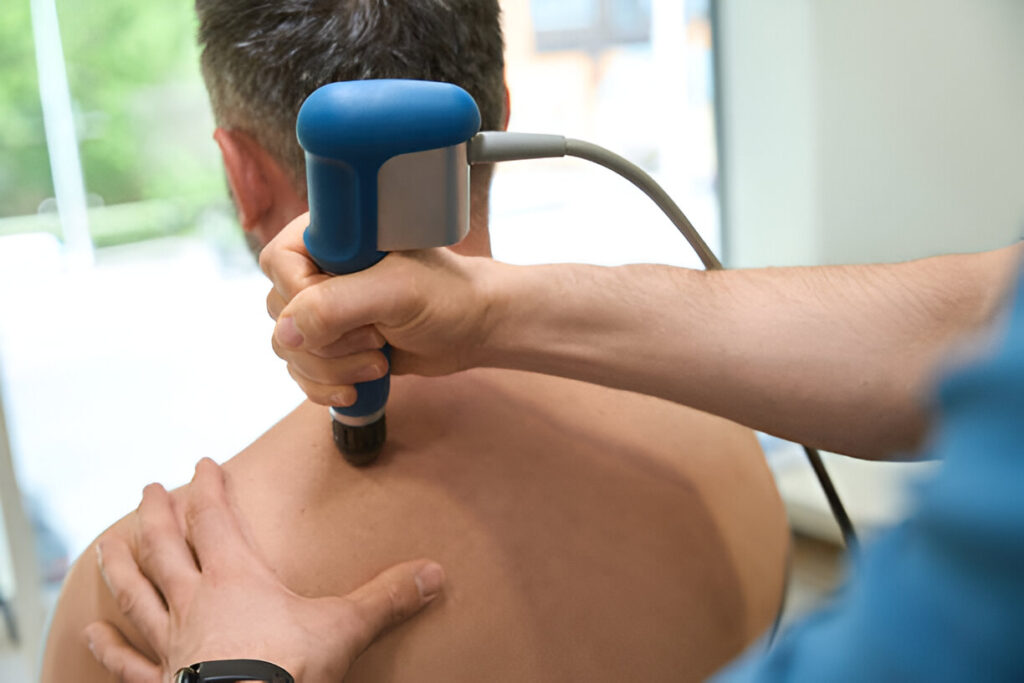In recent years, shockwave therapy has gained popularity as a non-invasive treatment option in physical therapy. This innovative approach uses acoustic waves to stimulate healing in injured tissues, offering a promising alternative to traditional methods like surgery or prolonged medication use. The therapy is particularly effective for patients dealing with chronic pain or conditions that have not responded well to other treatments. As more studies validate its benefits, shockwave therapy is becoming a staple in rehabilitation clinics worldwide. This article explores the key aspects of shockwave therapy and its application in physical therapy settings.
How Shockwave Therapy Works
Shockwave therapy operates on the principle of delivering high-energy acoustic waves to targeted areas of the body. These waves trigger a cascade of biological responses, including increased blood flow, reduced inflammation, and accelerated tissue regeneration. By promoting the natural healing processes, shockwave therapy can help to repair damaged tendons, ligaments, and other soft tissues. The treatment is generally administered using a handheld device, which allows therapists to precisely control the intensity and location of the shockwaves. Typically, patients require a series of sessions to achieve optimal results, with each session lasting between 15 to 30 minutes.
Conditions Treated with Shockwave Therapy
One of the major advantages of shockwave therapy is its versatility in treating a wide range of musculoskeletal conditions. Commonly, it is used for chronic conditions like plantar fasciitis, tennis elbow, and calcific shoulder tendinitis. Athletes often turn to shockwave therapy to speed up recovery from overuse injuries or to address persistent pain that hinders performance. The therapy is also beneficial for patients with delayed healing fractures or non-union fractures, as it promotes bone healing. Furthermore, shockwave therapy is increasingly being used to treat conditions like patellar tendinopathy and Achilles tendinopathy, offering relief where other treatments have failed.
Benefits of Shockwave Therapy
The appeal of shockwave therapy lies not only in its effectiveness but also in its safety and convenience. Unlike surgery, which carries risks of complications and long recovery times, shockwave therapy is a non-invasive procedure with minimal side effects. Most patients experience only mild discomfort during treatment, and there is no need for anesthesia or prolonged downtime. Additionally, shockwave therapy can significantly reduce pain and improve mobility, often leading to better long-term outcomes compared to other conservative treatments. For patients seeking an alternative to medication, shockwave therapy offers a natural and drug-free solution that targets the root cause of pain.
What to Expect During Treatment
For those considering shockwave therapy, it’s important to know what to expect during a typical session. Before the procedure, the therapist will assess the affected area to determine the appropriate settings and ensure the treatment is tailored to the patient’s needs. The therapist will then apply a gel to the skin, which helps to transmit the acoustic waves more effectively. Using the handheld device, the therapist will deliver short bursts of energy to the targeted area, adjusting the intensity as needed. Most patients describe the sensation as mildly uncomfortable, similar to a deep tissue massage. After the session, it’s common to experience some redness or swelling, but these side effects usually subside within a few hours.
Limitations and Considerations
While shockwave therapy in San Francisco offers numerous benefits, it is not suitable for everyone. Patients with certain conditions, such as blood clotting disorders, infections, or those who are pregnant, may be advised against undergoing this treatment. Additionally, the effectiveness of shockwave therapy can vary depending on the individual’s overall health, the severity of the condition, and the specific area being treated. It’s also worth noting that while many patients experience significant improvement, the therapy may not completely eliminate symptoms in all cases. Therefore, it’s essential to consult with a healthcare professional to determine if shockwave therapy is the right option for your specific condition.
The Future of Shockwave Therapy in Physical Therapy
As technology continues to evolve, the future of shockwave therapy in physical therapy looks promising. Advances in equipment and treatment protocols are likely to enhance the precision and effectiveness of this therapy, making it accessible to a broader range of patients. Researchers are also exploring the potential of combining shockwave therapy with other modalities, such as stem cell therapy or platelet-rich plasma (PRP) therapy, to further boost healing outcomes. With ongoing studies and clinical trials, shockwave therapy is set to remain a valuable and versatile tool in the arsenal of physical therapists, helping more patients achieve better recovery and improved quality of life.
Advances in Physical Therapy
Shockwave therapy represents a significant advancement in physical therapy, offering an effective and non-invasive option for treating various musculoskeletal conditions. Its ability to accelerate healing, reduce pain, and improve function makes it a valuable tool for therapists and patients alike. As research continues to support its efficacy, more people are turning to shockwave therapy as a preferred method for managing chronic pain and promoting recovery. Whether you’re dealing with a stubborn injury or seeking to enhance your rehabilitation efforts, shockwave therapy could be the solution you need to get back to your best self.



